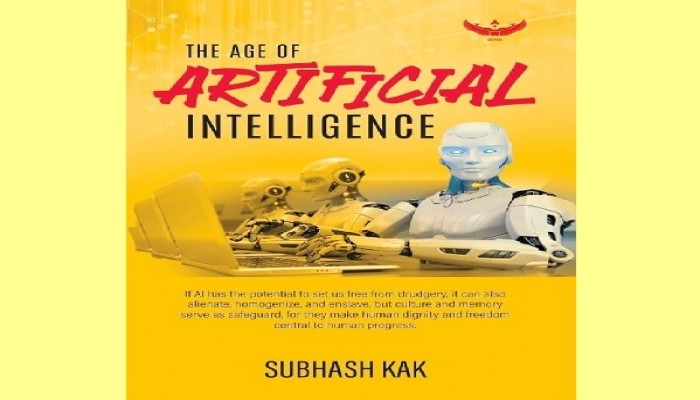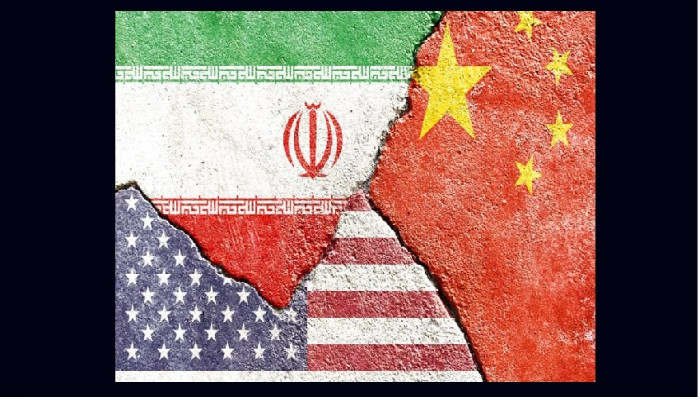- Jun 22, 2025
- Richa Yadav
Featured Articles
Age of Artificial Intelligence
The impact of AI is widespread. What comes to your mind when you hear the word ‘AI’? Efficiency? Automation? Chat Boxes, self-driving cars, or mass unemployment? It’s even deeper, says distinguished academic scholar, author, and Regents Professor at Oklahoma State University, USA, Subhash Kak. AI's impact will be profound and widespread. The geopolitics, the world population, and the idea of self will change unimaginably. First of all, the presence of AI has begun to change the very basic mental makeup of humans. The acceptance of this idea that we are perceived as algorithms is changing something within us. We are giving up our agency and bringing the machines to the centre for most of our decision-making. Strangely, we have begun to perceive ourselves as machines and are trusting our algorithmic lives more than we did in the past. This is leading to disillusionment and pushing us to stay confined to our own AI-driven virtual spaces. It is estimated that the global population, at the end of the century, will be almost half of what it is now. Increasing job losses, alarming rate of disillusionment among people due to drugs, etc, migration, changing focus from love of nature to virtual spaces, are all gradually shifting away the younger generations from creating families by giving birth to young ones. Yes, people are being encouraged not to think of having babies! This is seen all over the world, be it the US, Canada, or any European country like Italy, Spain, Russia, or Ukraine. This is also visible as a common trend in Asian countries like Japan and Korea, and China. By the end of 2300, from today’s 8 billion, the world population might shrink to 100 million! The global political power dynamics will change; the countries that are dominating the geopolitical game will have an even bigger role in play. The European economy is going down; it is only 60% of the American economy. China's population right now is about four times that of the US, but in another 80 years, there are projections that China's population will be less than that of the Americas. This also gives the Chinese greater incentive to invest in robotics. So, it's a complicated game. Countries like the US and China, with more advanced AI, will use technology to disrupt the world, changing the power dynamics. When the fertility rates collapsed, some European nations opened their door for immigrants, going easy on their migration policies. However, with the increasing rate of migration in the last few years, it would be another major factor, and the cultural clash between the new immigrant groups and the host populations will sharpen, especially in the West, the author argues. “Without assimilation, some European nations will disappear in the coming decades.” (pg. 14) and “the West will experience an existential crisis due to migrants who do not wish to assimilate and whose numbers are expected to rival the natives at many places.” (pg. 206) This idea might be contested as with the rising impact of globalisation, cultural ties are breaking, and people are moving towards homogenous cultural trends in their lifestyles and way of thinking. The role of AI in disrupting collective memory and cultural heritage could not be ignored. AI, being a broken mirror, reflects only a shattered, broken reality. Using this powerful metaphor, Kak explains how we are forced to see only some aspects of reality, not the whole; this distortion of reality impacts our creativity, our ethics and connection to our culture. Throughout history, and even in the contemporary world, wars have been waged to take control or with the intention of erasure of other races and communities. However, AI is changing the way political power will be displayed in the days to come. No more killing of the non-believers or burning books, temples, and arts would be needed; AI has given a rather ‘non-violent’ way to do the same in subtle ways. It will create false memories and baseless narratives, silencing the voice of those who do not fit into the crude designs. “If the West is doing the programming, the rivals will get programmed…”, says the author, warning against something similar to ‘colonisation’ of minds we have witnessed in the past. (pg.208) The methods of education are also evolving due to AI. Online education is another disruptive challenge forthcoming for colleges, as their purpose will be defeated when more and more students get engaged in online learning opportunities. Colleges will be at risk of shutting down. Not only has technology made the brick-and-mortar libraries obsolete, but the workplaces are transforming, and the needs of businesses, governments, and societies are shifting. No matter how enthralling the results of AI may appear, we should not forget that it will ultimately enslave humanity. If there is no absolute morality, then the centrality of the individual is replaced with the primacy of the group identity that is defined by the collective. The author highlights a flaw in wokeism: its intolerance of differing viewpoints. He argues that "cultural Marxism," as the underlying framework, lacks a common external standard or "referent" for truth, meaning it struggles to acknowledge validity outside its own prescribed groupthink. Kak integrates his critique of Cultural Marxism and wokeism into a broader warning about the AI age. He believes AI, while offering potential, also risks alienation and enslavement by concentrating power in the hands of those who control information. He champions "culture and memory" as vital defences against these technological and ideological threats to human dignity and freedom. I have been following Professor Kak’s work through his appearances on several podcasts available on YouTube. He has always strongly argued that the reductionist, materialistic rationality does not fully explain reality. I wondered if his new book would budge from his stance. Yet, he still continues to argue that this newfound algorithmic reality is not going to give the complete picture of the world. Can AI mimic the limits of human creativity? Well, no, but ultimately what we say is expressed in language, and who is spreading the words, dominating the voice? The book gives an all-encompassing analysis of the historic, philosophical, and social impact of this unavoidable technology in the market, which is ready to define the leadership, society and the self. It is an amazing book. Intellectually quite stimulating and very insightful. The author puts so many ideas and concepts together, helping you connect the dots and witness how the world is changing at a fast pace, where we have to stay put, never letting go of our own agency, as the author successfully reminds his readers. Are you ready to be driven by algorithm-driven propaganda? If not, then know how it can be a glaring possibility. Pages: 228 Publishers: Garuda Prakashan Pvt. Ltd- Jun 21, 2025
- Viren S Doshi












